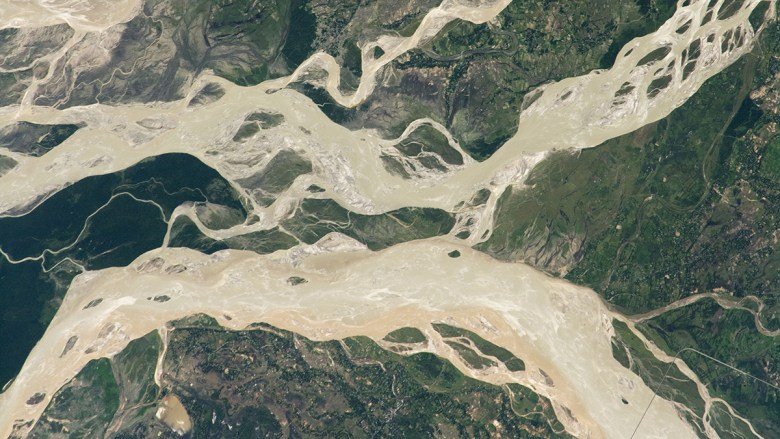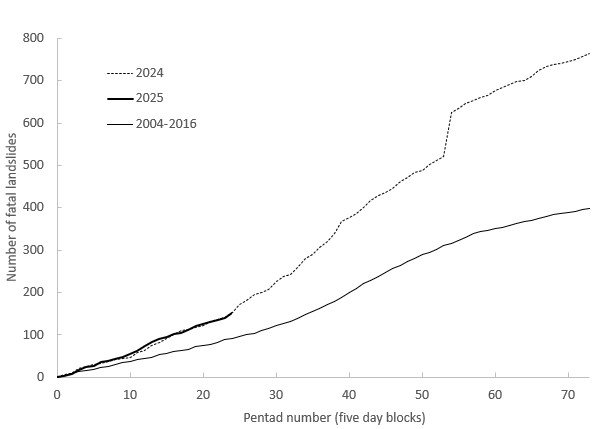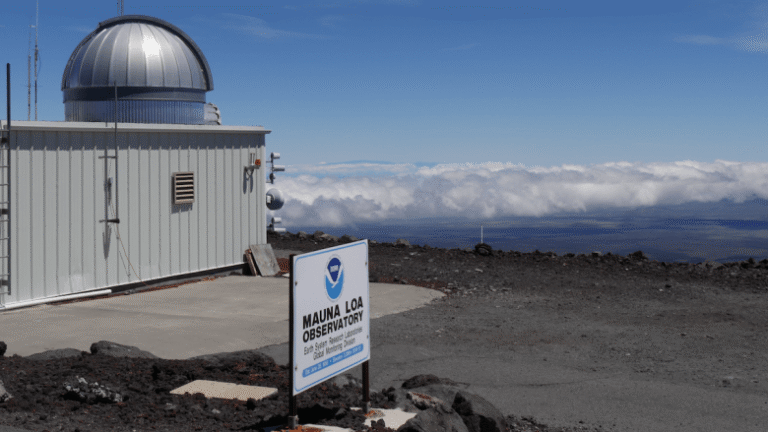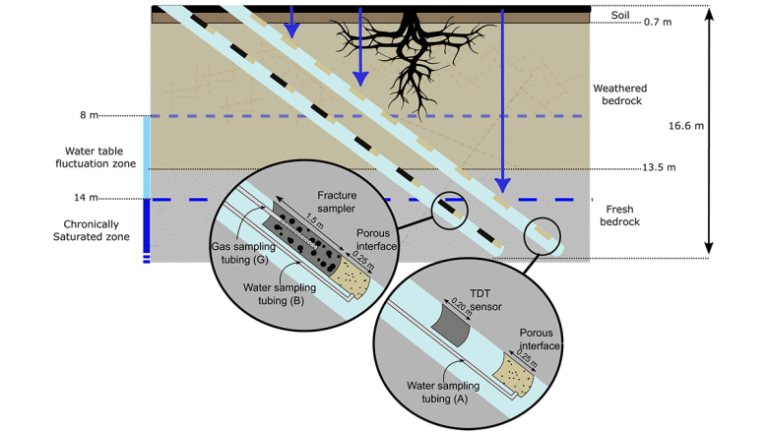

Source: Journal of Geophysical Research: Earth Surface
Compared to single-channel meandering rivers, multichannel braided rivers are often found in environments with sparse vegetation and coarse, shifting bars of sediment. Past research has called the way in which the paths of braided rivers shift over time “chaotic” because their migration depends on many factors, including river shape and changing water levels.
However, because the migration of individual channel threads can affect the likelihood of hazards like flooding or erosion, understanding this migration is critical to protect the residents, structures, and ecosystems surrounding these complicated waterways.
Li and Limaye examined a 180-kilometer span of the Brahmaputra-Jamuna River, a river in Bangladesh whose channels have been well resolved through satellite imagery.
Scientists—and many of the 600,000 people living in the islands between the river channels—already know that the river’s water levels are high during the summer months’ monsoon season and low but consistent from January to March. But this research team used a statistical method called dynamic time warping to map long-term changes in the river channels’ sizes, shapes, and routes between 2001 and 2021. This technique allowed them to calculate how much and how quickly the centerlines of channel threads shifted. They then applied an existing model developed for meandering rivers to see whether it could also predict the movement of braided channel threads.
They found that the Brahmaputra-Jamuna River’s movements were more predictable than previously realized. About 43% of its channels moved gradually, rather than abruptly, during the study period. On average, these channel threads migrated more quickly than most meandering rivers, at a rate of about 30% of their width per year. In some cases, the rate of this migration was closely related to the curvature of the channel thread, and across the board, it was weakly related to channel thread width.
These findings have important implications for future research on braided river channels, the authors say. Knowing that at least some channel threads migrate coherently might inform erosion and flooding mitigation efforts for braided river regions, especially those in densely populated areas. (Journal of Geophysical Research: Earth Surface, https://doi.org/10.1029/2024JF008196, 2025)
—Rebecca Owen (@beccapox.bsky.social), Science Writer

Citation: Owen, R. (2025), Coherent, not chaotic, migration in the Brahmaputra-Jamuna River, Eos, 106, https://doi.org/10.1029/2025EO250237. Published on 2 July 2025.
Text © 2025. AGU. CC BY-NC-ND 3.0
Except where otherwise noted, images are subject to copyright. Any reuse without express permission from the copyright owner is prohibited.


